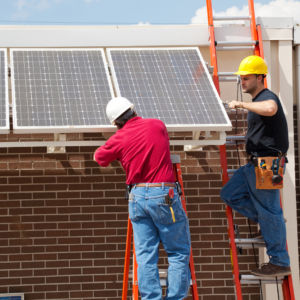In the past several years, American energy has gotten significantly greener. Solar installations reached new records in 2018 and low prices for natural gas helped push utilities to switch away from coal to the cleaner-burning fuel. Going further will likely cause prices to rise for consumers. As a result, adoption of alternative energy has been uneven across the country. Particularly in the southeast and southwest, the difference between a utility-driven and consumer-driven market has had a large impact on the switch from conventional to alternative energy generation.
Despite the broader trend towards clean energy, consumers in many states in the southeast have resisted the transition out of price concerns. Nuclear energy has had a difficult time in the last several years as projects in Georgia and South Carolina have run wildly over budget without reaching completion. At the same time, consumers have been hesitant to adopt or push for renewable energy when it would likely require rate increases.
In North Carolina, a $13.1 billion grid modernization plan proposed by Duke Energy last month received a poor reception from ratepayers and clean energy groups, even though the changes would facilitate the integration of renewable energy into the grid. Even pro-solar advocacy groups were hesitant to spend the money.
“Some grid modernization is certainly needed,” Peter Ledford, general counsel for the North Carolina Sustainable Energy Association told Utility Dive. “But the price tag put forward by Duke is shocking, and what’s in their proposal is shocking as well.”
Clearly, consumers are sensitive to the price tag of a clean energy transition.
Where utilities are investing in solar in the region, reflects consumer pressure rather than legislative demands. Several states are seeing growth in small-scale, community-based solar programs. Rural co-ops and municipal systems, which are more receptive to consumer demands, have been quicker to shift to solar than larger utility companies. States like Georgia and Tennessee are working to implement programs allowing communities to start small scale solar projects that would produce between 1 and 2 MW of electricity.
Even so, these programs have been far less successful than in other parts of the country. Alabama, Louisiana, and Mississippi still have no community or municipality-based solar options. Tennessee, Arkansas and West Virginia have two or fewer each. The push for solar power appears to have a much more limited base of support.
Meanwhile, in the southwest, utilities are under increasing pressure from both consumers and regulators to transition away from natural gas towards renewable energy. Increasingly the switch is driven by force of law. This trend has become particularly pronounced in Arizona where a state commission moved last week to halt the construction of new natural gas plants of 150 MW or larger through the end of the year. The final wording of the moratorium has not yet been released, but amendments from the commissioners provide a sense of the future they see for the energy landscape and future of natural gas in the state.
“In an effort to protect ratepayers from potential unnecessary capital improvements in the near future and stranded asset costs in the long-term, this amendment places a temporary moratorium on new natural gas infrastructure pending Commission review and approval on a case by case basis,” the moratorium amendment says.
To be excluded from the ban, utilities must first conduct a study comparing the costs of alternative energy storage options (i.e. batteries) and natural gas generation, before applying for a waiver. The changes come as state utility regulator Andy Tobin is pushing for 80 percent renewable and nuclear generation by 2050.
In addition, Arizona, along with neighboring Nevada, is gearing up for a renewables fight at the polls in November. Both states will have a renewable portfolio standard on the ballot. In Nevada, the ballot measure would amend the state constitution to ensure that 50 percent of the power generated by the state’s utility companies comes from renewable sources by 2030. In Arizona, a separate ballot measure proposed the same goal. Both are backed by liberal billionaire Tom Steyer, while in Arizona, state utility companies are already funding an opposition group.
Ironically, recent research suggests that neither approach is the most effective in terms of persuading customers to change consumers’ energy use. According to a study from the Energy Policy Institute at the University of Chicago, a combination of price-incentives and “moral suasion” is most effective in changing behavior. When electricity rates are time sensitive, spiking during periods of the day when demand is highest, the researcher found that consumers changed their usage patterns over the long term. Meanwhile, pleas to conserve energy were only successful in reducing energy use for the short term.
“Higher prices resulted in a change in habits that outlasted the intervention,” the Energy Policy Institute said. “Even after the intervention ended, households in this [test] group continued to conserve energy.”
The trouble is introducing such sensitive pricing models into real utility markets. The idea of raising prices is in many areas a political non-starter. Instead, the focus continues to be the push to “go green.”

